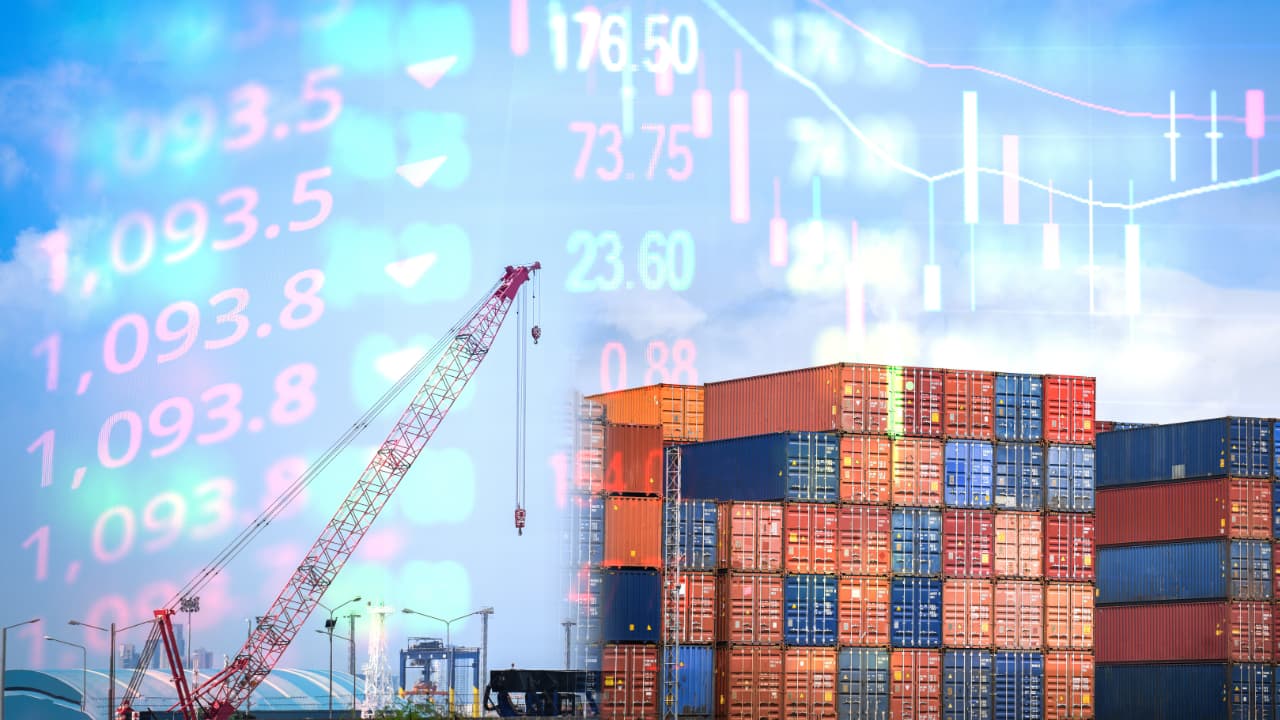
From price hikes on cameras to shifts in production strategies, the impacts of the Trump Tariffs on the industry are going to be one of the main talking points of NAB.
Yesterday’s announcement of sweeping import tariffs on all goods entering the United States will have major implications for the filmmakers, TV studios, production companies, creators and the media and entertainment industry as a whole. With the industry’s biggest in-person event for buyers and sellers of film and TV technology, NAB, days away from starting in its Las Vegas home, we know what the first thing exhibition attendees will now be discussing. Move out the way AI and virtual production, the new ice breaker is going to be “What about these tariffs, huh?”. Let’s look at what it means.
RedShark has reached out to multiple manufacturers and industry bodies for comment including the IABM, who declined to comment on the tariffs, which hints at some of the (understandable) political sensitivities within the industry surrounding the subject. With that in mind we will use the publicly available information to look at what we can expect.
We will look at it from the point of view of US consumers (that is the largest proportion of RedShark’s audience and potentially the most affected with the news), but also recognising many of our readers work for global vendors that manufacture products that sell into the United States. ) Plus we have to acknowledge that this could be only the opening salvo of an all-out trade war, mainly between the three economic powerhouses of the US, Europe, and China.
I also want to note that one of the best sources of information I have found is actually from respected US-based systems integrator, Puget Systems. This piece written by Puget Systems President, Jon Bach, is thorough and a great resource for US-based readers.
With significant likely price hikes on imported cameras, lenses, lighting and computing gear, US-based consumers of industry technology, from independent creators to production companies to streaming/ broadcast/ studio giants will need to adjust their strategies. Here’s how they might adapt:
1. Cameras and lenses: Shifting to US-based manufacturers
Is this even possible? If it is, what is to stop US manufacturers increasing prices? Let’s take a look: With 24% tariffs on Japanese cameras (Canon, Sony, Fujinon, Nikon), 20% on German cameras and lenses (ARRI, Zeiss), and 10% on Blackmagic Design cameras and IO (Australia), US-based brands like RED and Atlas Lens Co. may gain a competitive edge. That is just on the production company/ creator side - the Broadcast cameras and lenses (costing many hundreds of thousands of dollars) will see even bigger increases.
- RED cameras (especially the reduced KOMODO) could become a more viable alternative to ARRI and Sony for high-end productions, though costs of foreign-produced will rise
- Atlas Lens Co. and Panavision may see increased demand as filmmakers seek US-made cine lenses
- Second-hand market growth: We are already seeing a change here (I saw it compared to “Covid car prices”). Some buyers may choose used Canon, Sony, or Blackmagic cameras to avoid tariff-driven price hikes.
2. Lighting & Grip: Exploring budget workarounds
China-based lighting brands like Aputure, Godox, and Creamsource will see eye-watering 54% tariffs, meaning LED lighting and grip gear costs could skyrocket. We sincerely hope not as there is a huge amount of innovation in this area right now and we know margins are already tight in this competitive sector of the industry. How can we get around this?
- Older lighting tech revival: Some filmmakers may return to traditional tungsten or fluorescent lighting to avoid high-cost LED imports.
- US-based lighting options: While fewer in number, Litepanels (California) and Mole Richardson (Hollywood) may become more attractive.
- Buying second-hand gear: Again, like cameras, expect a boom in used lighting sales on platforms like eBay and Facebook Marketplace.
3. Computing & Storage: Adjusting to higher costs
Since GPUs, CPUs, and SSDs are primarily made in China (54% tariff), Taiwan (32%), and Japan (24%), US consumers will struggle with higher costs for editing, VFX and general post production workstations and storage solutions.
- Cloud-based editing & rendering: Will this be the push the industry needs to invest in cloud? Services like Frame.io, Vimeo and Blackmagic Cloud could gain traction. However we *know* how much professionals prefer local storage and rendering power to control costs and work in challenging environments where connectivity is an issue.
- Extended hardware lifecycles: Editors may hold onto older GPUs and CPUs longer, upgrading less frequently. The 5090s are hard enough to get hold of already, with an additional 32% tariff added? Even harder to justify.
- Buying from US system integrators: Custom PC builders like the aforementioned Puget Systems may offer workstations optimised to avoid tariff-heavy components, however they still need to import components themselves so this is a grey area for now
4. Software and SaaS-based workflows will expand
Touched on this above with Cloud workflows, basically since software is exempt from tariffs, we may see an industry-wide push toward SaaS-based production solutions:
- Cloud-based editing suites (Blackmagic Cloud, Adobe Creative Cloud, Frame.io, Vimeo).
- Subscription-based color grading & VFX software instead of upgrading local machines.
- More reliance on AI-assisted editing & automation tools to offset higher hardware costs. Not something anyone reading this will want to see but it’s definitely a possibility at this point.
- Again a key challenge here is many studios/ creators prefer on-premises solutions for security & control.
This is a fast moving area, and frankly the uncertainty is extremely problematic for not just our industry but for everyone. We will try and keep pace with the changes as they happen and would love to hear your thoughts based on your roles in the industry. What no one wants to see (but I think will inevitably happen) is a slow down on hardware investment. We have just come out of Covid, strikes, and a huge adoption of AI - do we *really* want another reason for studios and buyers to slow down investment in technology? Definitely not.
There are workarounds. Nintendo, for example, is estimated to have pre-emptively imported hundreds of thousands of Switch 2 consoles into the US already, and it doesn’t even launch until June. Companies such as Apple will undoubtedly have increased their stock levels as a hedge against rising tariffs, others will likely have done the same. There is also a chance that it might all go away as quickly as it arrived and governments will start to negotiate a way out of this before there are any lasting economic consequences. Or, on the flip side of that, we could be in for a global trade war on a previously unprecedented scale. The uncertainty swirling around the whole subject is one of the main problems of dealing with it.
The result is that this is definitely what everyone at NAB will be discussing this week. Good luck out there everyone!
tl;dr
- With significant tariffs on imported cameras and lenses, US consumers may shift towards domestic manufacturers, potentially increasing demand for these brands as foreign prices rise.
- Filmmakers might explore budget alternatives such as reviving older lighting technologies or purchasing second-hand gear to mitigate the impact of steep tariffs on LED lighting from Chinese brands.
- Higher costs for computing and storage components due to tariffs could lead to increased interest in cloud-based editing solutions while prompting professionals to hold onto older hardware for longer periods.
- The expansion of software and SaaS-based workflows may become a more attractive option as industry professionals adjust to rising equipment costs and seek more efficient production methods.
Tags: Production Featured NAB 2025


Comments